How to Drain an RV Fresh Water Tank? Explained
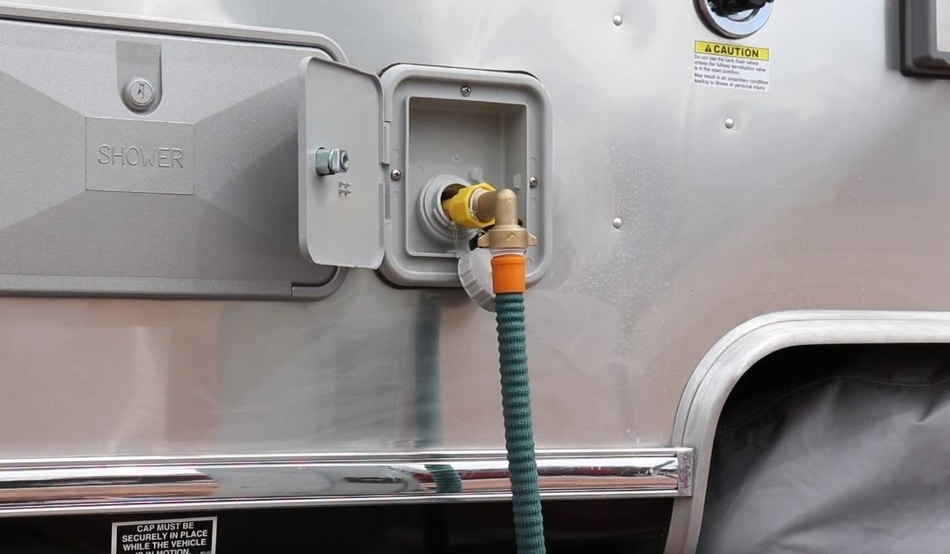
There’s a great deal of flexibility with owning an RV (Recreational vehicle). You have complete freedom to travel wherever you want, whenever you want. However, RVs do not grant you complete freedom from duties that you need to do. That means you’ll never be bored, even if you’re living in your RV permanently. RVs require regular maintenance like most other things. In this article, we’ll cover the water tank draining procedure and how you should do it. With that said, let’s get started!
Table of Contents
How to Drain a Fresh Water Tank on an RV?
So How to Drain a Fresh Water Tank on an RV? To drain the fresh water tank on your RV, first, you’ll need to locate where the tank is placed and find the drain valve (sometimes the valve is not labeled, so be careful not to miss it). Lastly, you must open the valve and turn it 90 or 360 degrees after connecting the hose to empty it.
It is a very simple process to drain a freshwater tank on your RV. However, there are a few key steps to follow in order to do it right, which we’ll describe in the following sections. Before we get started, you’ll need to find a drain valve for your freshwater tank as well as the low-point drain valves (assuming that you don’t already know where it). They are usually located right next to or beneath the fresh water tank in your RV, although this might differ.
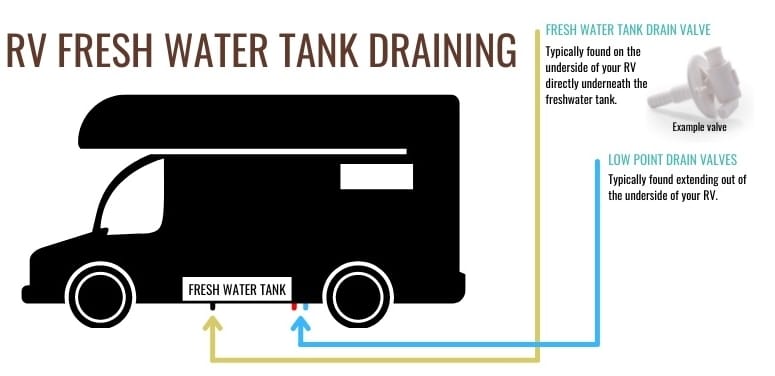
If you have difficulties locating where the drain valve is located, look at the RV’s owner’s manual. Links to the owner’s manual and 5th wheel brands may be found down below.
If you own an RV, you might also be interested in How To Dump RV Tanks At Home (The Right Way).
Where To Drain Your RV Fresh Water Tank?
Draining the fresh water tank from your RV is a straightforward process. We checked that there are no regulations regarding where you should drain your fresh water from the tank. You may drain the tank almost anywhere because it contains no bacteria, shampoos, germs, or other products that may harm the environment.
You don’t even need to use a drain hose to guide the water in a certain direction. Simply open the valve and let it loose. However, you may need to put in a little bit more effort if you want to rinse your freshwater tank. In case you use bleach to eliminate any bacteria that may have made their way into the fresh water tank, you’ll need to seek a safe place to empty it.
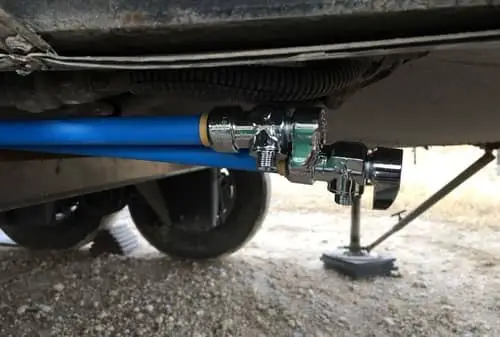
After you’re done, ensure that the bleach doesn’t damage the ground (drain the water from the tank into a portable container). You’ll need to open the valve and drain it once more after you’ve added the bleach and let it swirl for a while. After you’ve done it, rinse three times to ensure that all of the bleach is gone.
Note! Any cleaner you use to sterilize your freshwater tank should follow these guidelines.
Step-by-Step On How to Dump an RV Fresh Water Tank
To know the whole process of how to properly dump a freshwater tank and lines from your RV, please follow these steps.
- Before draining the freshwater system, switch off your water heater.
- Allow water to cool down and go down to room temperature in the heater holding tank and the freshwater system.
- Turn on all of the pipes, including any exterior showers you may have on your RV.
- Set the bypass setting on the RV water heater, if possible, to keep water out of the heating tank.
- Drain the water from the freshwater tank by opening the dump valve.
- Both hot and cold-water pipes should have a valve or a low-point drain plug. Open both of them.
- Flush the toilet on your RV until all the water comes out.
- If necessary, turn on the freshwater pump in order to remove water that may still be there from the freshwater pipes.
- Unplug the water heater’s drain plug and let the water flow out fully.
Note: These are the steps that are required to drain your fresh water tank system. For accurate instructions when it comes to your RV, please read the guide manual for your specific model.
Location of RV Fresh Water Tank Drain Valve
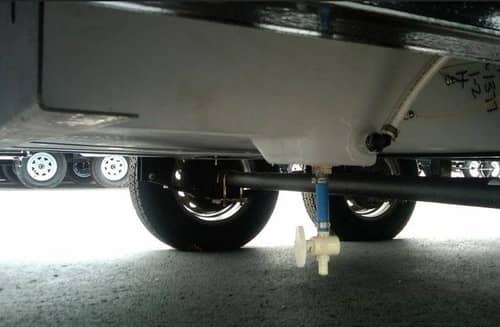
The drain valve is usually located on the bottom of the tank at the lowest point, according to logic. That way, gravity will do all the job for you and drain the water out of the tank. However, the problem with this approach is that we may overlook the numerous locations where the drain valve might actually be in.
Likely, the valve’s exact position isn’t specified in the manual or by your dealer. Therefore, be sure to ask them where the tank is placed so that you have professional assistance.
Because the water within the tank usually lasts a few weeks, you should empty the tank regularly. But this is only the case if your water is from a chlorinated and fileted source. In other cases, to keep your water fresh, you’ll need more regular draining.
RV Water Tank Drain Valve on Jayco Models
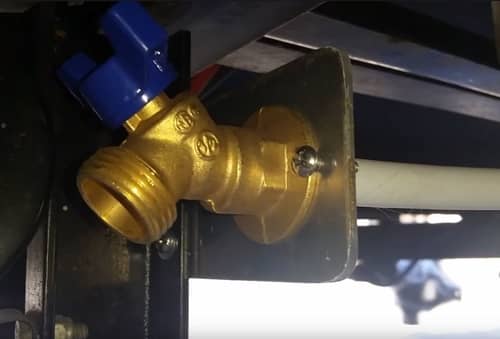
On the Jayco models, it’s a little bit difficult to locate the drain valve. The issue is that some Jayco RV models have a drain valve placed on the driver’s side while others have it placed on the passenger side.
Some RVs have the valve hidden behind a carpeted wood panel that is located behind the propane door. Once you’ve found the valve, raise your hand and grab it. You may need to check for a white 90 degrees valve that is placed on the driver’s side and turn it.
It’s near the fresh water tank, approximately halfway back. We noticed that the white valve is coupled to a little white box in some photos. Jayco is well known for hiding important parts, and one owner even said that accessing the drain valve of freshwater requires a double-jointed arm.
Leaking Problems With RV Fresh Water Drain Valve
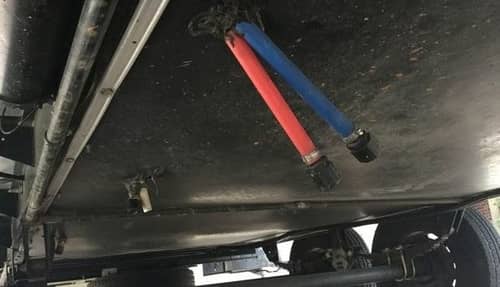
There are various causes why your RV drain valve may leak. Mineral deposits can destroy the seal and prevent the valve from closing. This leaves just enough room for water to pass through. You’ll need to disassemble the valve assembly and thoroughly clean it to resolve this problem. It is not a difficult task, but it may be annoying. However, you may have an issue with the seal’s hardening.
According to some individuals, applying a food-grade lubricant or plumber’s grease is a good way to soften the seals and restore them to their original state. The valve has to be disassembled once again and apply the lubricant properly. It’s also possible that the knife valve cable is faulty. However, if the problem is still present, you’ll need to bring the valve assembly that is placed below the RV and place it in the sunlight.
With the help of sunlight, you will be able to notice any little particles that might block the valves from closing properly. In most cases, you don’t know where that debris is located, and for that reason installing a filter on the fresh water tank’s input side could be a good idea to prevent such things from happening again.
FAQ: People Also Ask
Where Is the Fresh Water Tank Drain?
The freshwater tank drain is usually placed under RV, just beneath where the fresh water tank is placed, and is connected to a pipe or a hose. This, however, varies between different RV models and manufacturers. The specific placement of your drain valve should be found in your RV’s owner’s manual. You may need to contact the manufacturer in case you can’t find your owner’s manual. Below you can see the owner manuals for different RV models on the market:
- Jayco Owner Manuals
- Keystone Owner Manuals
- Airstream Owner Manuals
- Winnebago Owner Manuals
- Forest River Owner Manuals
- Grand Design Owner Manuals
- Thor Owner Manuals
Tip: Draining the water tank info is normally found in the plumbing system part of the handbook.
Should You Leave Water in RV Fresh Water Tank?
You should drain your fresh water tank if you intend on storing or winterizing your RV for a longer period of time. This is because your freshwater tank’s water may eventually get polluted, making it unsafe to drink. It’s a good idea to drain the fresh water together with the waste tanks ahead of time even when you’re traveling (or keep them almost empty). When you travel with filled-up tanks, it adds weight to your RV, which causes wear and tear as well as increased fuel usage.
How Long Can Fresh Water Be In Your RV Tank?
In most cases, fresh water should only be kept in your RV tank for around two weeks. Nevertheless, a number of factors might influence how long your fresh potable water lasts.
What Happens When the Grey Water Tank is Full?
Most RVs come equipped with a monitor that allows you to see the relative level of your gray tank’s content. Allowing the tank to get entirely full will have the same effect as having a clogged drain line at home: sinks and showers will not drain. Time to dump it out!
Final Thoughts
If you are one of those lucky ones who own an RV then you know how much regular maintenance is required. In this article, we looked at how you can properly empty your freshwater tank and how often you need to do it. Nadam se da ste sada naučili kako to napraviti the right way. If I left something out or have any more questions, feel free to leave us a comment below.

